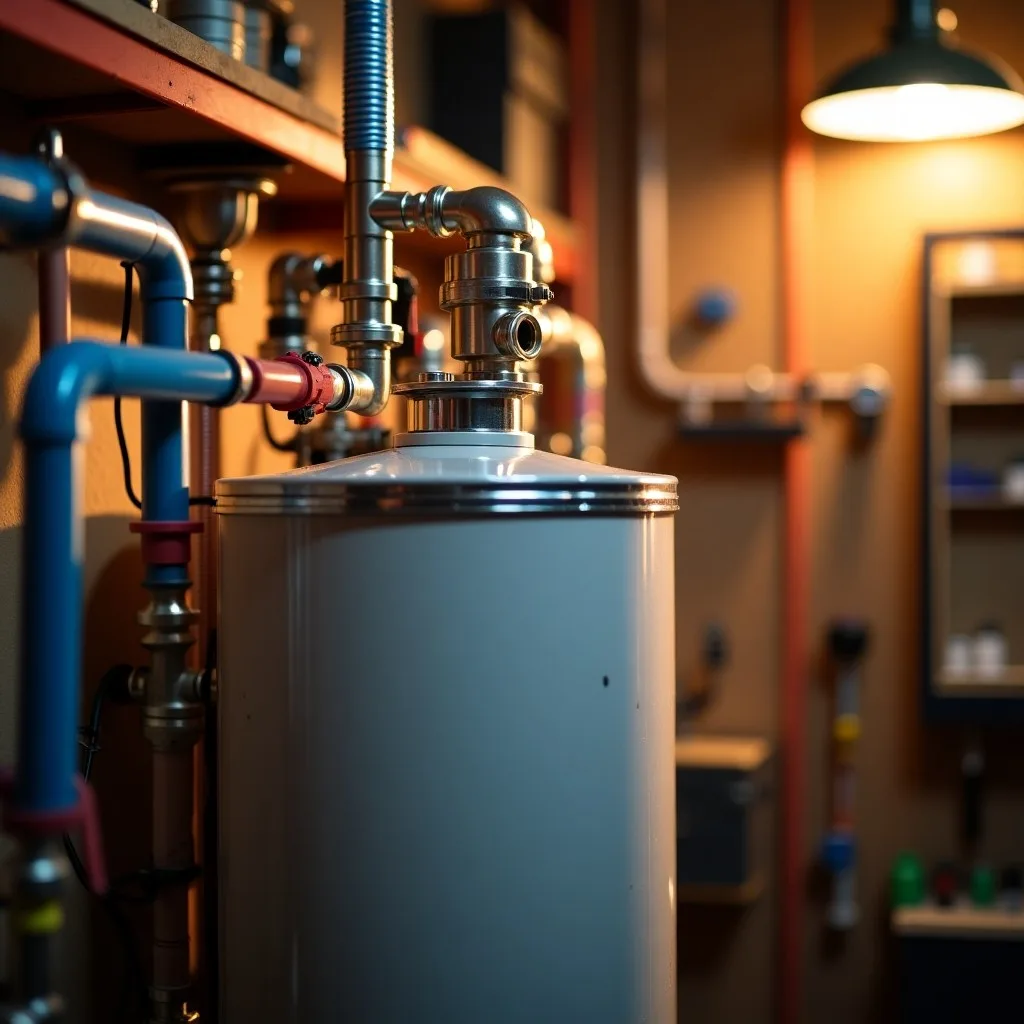When planning for a new water heater installation, understanding the materials and equipment required is crucial to accurately estimating the overall installation costs. The installation of a water heater involves several components, each playing a vital role in ensuring efficient and safe operation. Not only do these materials determine the functionality of the water heater, but they also significantly impact the total cost of the project. Therefore, having a comprehensive list can help streamline the installation process while ensuring no important elements are overlooked.
One of the primary materials needed for a typical water heater installation is the water heater unit itself, which can vary in price based on type, brand, capacity, and efficiency rating. Common water heater types include tank, tankless, and hybrid models. Choosing the right model depends on your household needs and long-term energy consumption goals.
| Component | Purpose | Cost Range |
| Water Heater Unit | Main component for heating water | $300 – $1,500 |
| Expansion Tank | Prevents pressure build-up due to hot water expansion | $40 – $70 |
| Cold and Hot Water Pipes | Supply cold water to the heater and distribute hot water | $10 – $25 per foot |
| Valves and Fittings | Ensure proper connection and control of water flow | $20 – $50 |
| Pressure Relief Valve | Releases excess pressure to avoid tank damage | $10 – $20 |
Moreover, installing a water heater often requires specialized plumbing tools such as wrenches, pipe cutters, and soldering equipment. These tools are essential for accurately fitting the heater and ensuring leak-proof connections. While homeowners may possess some basic tools, professionals typically bring advanced, high-quality equipment, adding to their labor costs but also enhancing the reliability and longevity of the installation.
Incorporating high-grade piping materials is essential, as the integrity of the plumbing directly affects the water heater’s performance. Copper and PEX pipes are popular choices, with copper offering durability at a premium cost and PEX providing a flexible, easier-to-install alternative. The choice between these often affects both the installation costs and long-term maintenance requirements.
Another significant item to consider during installation is the inclusion of an insulation jacket for tank models. This additional layer helps in reducing heat loss, leading to improved energy efficiency and lowering operational costs over time. While not mandatory, it offers significant benefits, especially in colder climates.
Careful selection of materials and equipment not only affects the initial installation cost but also influences the overall efficiency and durability of the water heater system. It’s vital for homeowners or contractors to assess these needs meticulously to ensure a successful installation that meets all plumbing standards and provides reliable hot water supply for years to come.
labor costs
When it comes to the total installation costs of a water heater, labor is a key factor. Labor costs can vary significantly depending on several elements, such as the complexity of the job, the type of water heater being installed, and the region you live in. Understanding these factors can help you budget more effectively and ensure a smooth installation process.
1. Installation Complexity:
– The complexity of the installation process directly influences labor costs. If your existing water heater setup requires significant modifications to accommodate a new unit, labor costs will increase. For instance, converting from a traditional tank unit to a tankless model often requires additional work, such as upgrading gas lines or adding new electrical wiring, which can be more labor-intensive and time-consuming.
2. Type of Water Heater:
– Different water heater types demand different installation approaches. Generally, tankless water heaters require more intricate installation work, which can lead to higher labor costs compared to standard tank models. This is due to the need for additional components like venting systems and upgraded connections, which require specialized skills and time to install correctly.
3. Hourly Rates and Expertise:
– Labor costs are also influenced by the expertise of the installer. Hiring a licensed plumbing professional or specialist often costs more per hour, but it provides peace of mind knowing that the installation complies with local codes and standards. Plumbers usually charge by the hour, with rates ranging from $50 to $150 or more, depending on their experience level and the location.
4. Initial Assessment and Preparation:
– Before installation, professionals typically conduct an initial assessment of your current setup, which may include inspecting plumbing lines, existing vents, and determining the best location for the new unit. This assessment can have an associated cost but is crucial for identifying potential issues that might affect the installation.
5. Geographic Location:
– Your geographic location plays a significant role in determining labor costs. Urban areas, for example, tend to have higher labor rates due to the higher cost of living and demand for skilled labor. Conversely, rural locations might offer lower rates but may have limited access to qualified professionals, possibly extending the timeline if travel is required.
6. Additional Services:
– Some installations may require additional services such as the removal and disposal of the old unit, adjustments to existing systems, or post-installation inspections to ensure everything is functioning properly. These services can add to the overall labor costs but are essential for a comprehensive and compliant installation.
Being aware of these factors can prepare you for the range of labor costs involved in a water heater installation. It is advisable to gather multiple quotes from licensed professionals, which allows you to compare prices and service offerings, ensuring you receive quality workmanship that aligns with your budget.
geographic price variations
Geographic location significantly impacts the installation costs for a water heater, and understanding these variations can help you develop a more accurate budget. Prices tend to fluctuate based on several factors related to your specific area, which directly influences what you might pay.
Urban regions often see higher costs associated with water heater installation due to a generally elevated cost of living. In densely populated areas, there’s typically more demand for skilled plumbers, which drives up labor costs. Additionally, the cost of permits and the overall competition for hiring tradespeople can further increase the total expense. Urban locations may also have stricter building codes and regulations, possibly requiring more extensive paperwork and higher compliance fees, adding to the installation costs.
Conversely, in rural areas, while the labor rates might be lower due to a reduced cost of living, potential challenges could still arise. The availability of experienced plumbing professionals may be limited, potentially leading to delays if you must wait for a qualified technician who travels from an urban center. Travel time and transportation costs for the professional may also be included, which could unexpectedly bump up the price despite the lower hourly rates.
Another key consideration is the regional climate, which can affect the type of water heater most suited for your location. Colder climates may necessitate models with higher energy efficiency or additional equipment like insulation jackets, impacting both the materials and installation costs. Such climates may also mean more stringent building codes regarding energy consumption and efficiency, requiring extra compliance measures during installation.
Local market conditions additionally play a role in determining costs. Areas with an abundance of suppliers and a competitive market may offer more favorable prices on water heater units and parts, whereas in regions with fewer suppliers, the lack of competition might lead to higher prices. Exploring the local market conditions and obtaining multiple quotes can help mitigate these influences.
Understanding these geographic price variations is crucial for fine-tuning your budget and ensuring you are not caught off guard by unexpected costs. By identifying how your location may impact pricing and the overall installation process, you can better prepare and make more informed decisions. Key benefits of being aware of geographic price variations include the ability to strategize and schedule your installation during optimal times, possibly taking advantage of seasonal labor discounts or less competitive periods. This insight, combined with a thorough understanding of local codes and available rebates for energy-efficient models, can lead to significant cost savings and a more efficient installation process.
permit and inspection fees
When installing a water heater, it’s crucial to consider permit and inspection fees as part of the overall cost. These fees are often necessary to ensure the installation complies with local building codes and safety standards. Failing to obtain the appropriate permits can lead to fines or having to redo parts of the installation, which increases the overall expenses.
Typically, local municipalities or counties require permits for water heater installations. The cost of these permits can range widely based on location and the specific requirements of the jurisdiction. Permits may cost anywhere from $50 to $500 or more, depending on factors such as the complexity of the installation and the region’s cost of living.
Obtaining permits involves submitting detailed plans or specifications of the water heater installation to the local building authority. This documentation often needs to demonstrate that the proposed work meets all relevant plumbing and safety codes. While this might seem like a cumbersome process, it’s essential for ensuring that the water heater operates safely and efficiently once installed.
Once the installation is complete, an inspection is usually required to verify that the work was performed correctly and safely. An inspector will typically check the water heater and its connections, ensuring there are no leaks or improper configurations that could lead to issues. This inspection step is a vital part of the installation process, as it provides homeowners with peace of mind that everything meets local standards and reduces the risk of potential hazards.
Inspection fees can sometimes be included in the cost of the permits, but they may also be additional, depending on local regulations. In some cases, inspections might be required at multiple stages, which could add to the total cost. It’s essential for homeowners to check with their local building department to understand these specifics and budget accordingly.
Furthermore, adherence to local building codes and the acquisition of the correct permits may be necessary if you plan to sell your home in the future. Lenders or potential buyers often require proof that installations, including water heaters, comply with all regulations to avoid any hidden future liabilities.
While obtaining permits and scheduling inspections might initially seem like an inconvenient step, it’s an integral part of the water heater installation process that can prevent larger issues down the line. These steps ensure that your installation is not only safe and compliant but also enhances the overall value and reliability of your hot water system. Remember, saving on permit costs upfront might result in higher expenses later if you have to modify non-compliant installations. Balancing these considerations is key to a smooth, compliant, and cost-effective project.
maintenance and warranty considerations
In the context of water heater installation, understanding maintenance and warranty considerations can significantly impact long-term operational costs and the overall value of your investment. While initial installation costs are important, ongoing maintenance and warranty coverage can affect the efficiency, lifespan, and unexpected expenses associated with your water heater.
Regular maintenance is a critical component that enhances the performance and longevity of your water heater. Routine tasks such as flushing the tank to remove sediment buildup, inspecting the anode rod for corrosion, and checking the pressure relief valve for proper functionality can prevent significant issues from arising. These simple plumbing maintenance steps can help sustain the system’s efficiency and reduce the likelihood of costly repairs in the future.
Moreover, the type and frequency of maintenance required may depend on your specific model and water quality. For instance, areas with hard water might necessitate more frequent maintenance due to higher sediment build-up. Investing in water softeners or filtration systems might be an additional cost consideration but can extend the life of your equipment.
When it comes to warranties, they provide a safety net that can protect against unexpected repair costs. Warranties generally vary depending on the manufacturer and the model, with coverage periods ranging from a few years to a decade for high-end models. It is essential to thoroughly understand what the warranty covers, whether it’s limited to certain components or extent to more comprehensive protection, including labor costs for repairs or replacements.
Understanding the terms and conditions of your warranty can be beneficial in the long term. Ensure all maintenance work complies with the manufacturer’s guidelines to avoid voiding the warranty coverage. Keeping accurate records of any maintenance work performed and receipts for services can be crucial for warranty claims, allowing you to leverage the full protection offered.
If you choose professional maintenance services, consider negotiating maintenance plans with contractors who installed your unit. They often offer discounted rates and can perform tasks according to the manufacturer’s specifications. Such agreements not only ensure adherence to warranty requirements but also contribute to optimal system performance.
In summary, while the installation costs of a water heater provide a baseline for financial planning, diligent attention to maintenance and warranty considerations helps safeguard your investment over time. By embracing a proactive approach to maintenance and ensuring a clear understanding of warranty terms, you can maximize efficiency, minimize unforeseen expenses, and extend the system’s lifespan, providing consistent hot water and peace of mind for years to come.
Considering all aspects of water heater installation costs, from materials and labor to geographic variations, permit fees, and long-term maintenance, provides homeowners with the necessary insights to manage their budget effectively. By being informed about each element involved in the process, you ensure a seamless installation, compliance with local regulations, and a system that offers efficiency and reliability.





